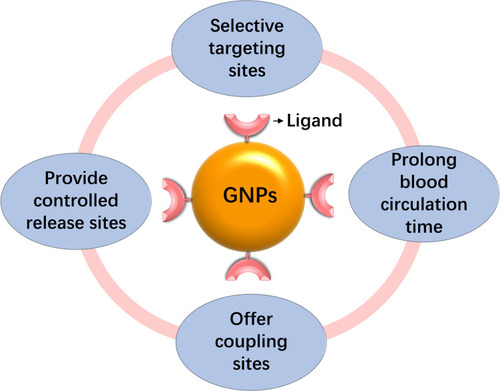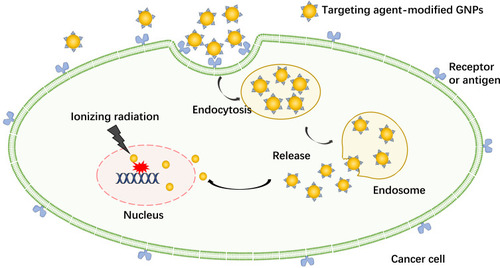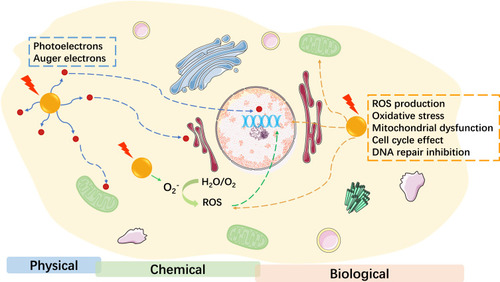Figures & data
Table 1 In vitro Studies on Radiosensitization of GNPs
Table 2 In vivo Studies on Radiosensitization of GNPs
Figure 1 The application advantages of functionalized GNPs.

Figure 2 Passive targeting for GNPs.

Table 3 Summary of Active Targeting and Targeting Approaches of Surface-Modified GNPs
Figure 3 Active targeting for GNPs.

Figure 4 The potential mechanisms of GNP radiosensitization.

